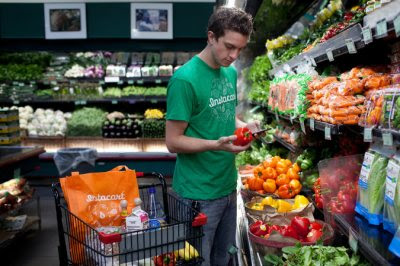In
an era when delivery apps, prepared meals, and rapid grocery innovation
dominate, it’s fair to ask: Is going to the grocery store to cook at home —
and doing all the dishes — still relevant? According ti Steven Johnson the Grocerant Guru® at Tacoma, WA based Foodservice
Solutions® the answer is complex but clear: while traditional grocery shopping
is evolving, it is far from obsolete. However, its relevance depends heavily on
how stores meet modern consumers' expectations for freshness, healthfulness,
convenience, and personalization.
The State of Grocery Shopping Today
Recent
data from FMI’s 2024 "The Power of Foodservice at Retail" report
shows that 65% of consumers still regularly shop at traditional grocery
stores, but their behaviors and expectations have shifted dramatically:
·
70% of shoppers
prioritize freshness and quality over everything else, including
price.
·
56% of U.S. adults
purchase prepared meals or ready-to-heat foods from grocery stores at least
once a week — up from 48% in 2022.
·
40% of grocery shoppers
are actively seeking hybrid experiences: combining shopping, dining, and even
entertainment in one trip.
Consumers
want groceries — but they want smarter groceries.
Health, Transparency, and Technology Are Reshaping the
Industry
·
88% of consumers desire
more healthy food offerings (Progressive Grocer, 2024).
·
52% of shoppers always
read product labels, scanning for terms like "all-natural,"
"heart-healthy," "low-sodium," and "clean
ingredients."
·
A growing 24% of Americans now
follow a specific diet like keto, plant-based, gluten-free, or Mediterranean,
making product variety and clear labeling crucial.
In
response, stores are innovating aggressively:
·
Whole Foods
is growing oyster mushrooms on-site, showcasing hyperlocal produce sourcing.
·
Kroger
has expanded its "Scan, Bag, Go" service to more than 400 stores,
letting shoppers skip checkout lines.
·
Domino’s Pizza
now offers voice ordering through Amazon Alexa and Google Assistant — and Walmart
has integrated generative AI into its mobile app to create curated shopping
lists based on dietary preferences.
Consumers
also want digital integration:
·
60% would love the
ability to scan items in-store for instant nutritional and allergen
information.
·
86% say they prefer
stores that automatically highlight coupons and deals relevant to their
shopping habits.
·
Yet 43% report forgetting to
use digital coupons, suggesting an opportunity for geo-fencing tech to send
real-time reminders while customers are near or in stores.
Convenience and Loyalty Are Top Priorities
Today's
grocery customers expect convenience:
·
32% prefer bundled meal
kits or ready-to-cook solutions offered in-store.
·
77% shop within a
five-mile radius of their homes, often visiting multiple stores to complete
their stock-up trips.
·
89% create shopping
lists and 62% intentionally combine store circulars with digital coupons
to maximize savings.
This
shows that even while tech adoption rises, the core needs for value,
efficiency, and fresh food remain unchanged.
What This Means for Cooking at Home
Despite
all this evolution, cooking at home is still deeply relevant, especially
for:
·
Budget-conscious families:
Home cooking remains about 5X less expensive than dining out (BLS Consumer
Expenditure Survey, 2024).
·
Health-focused shoppers:
Home cooks can fully control ingredients, portions, and methods.
·
Meal planners:
45% of consumers plan their grocery purchases around pre-determined meals or
recipes.
However,
consumers don't necessarily want to spend hours cooking and cleaning. This
fuels demand for:
·
Ready-to-heat meals
·
Pre-chopped produce
·
DIY meal kits
·
Smart kitchen appliances (air fryers,
instant pots) that speed up cooking time
Bottom Line
Going
to the grocery store — in its traditional sense — is less relevant for
today's convenience-driven, digitally connected, health-conscious consumer. However,
shopping for food, cooking at home, and controlling one's meals remains highly
important. Grocery stores that adapt with personalization, digital
integration, fresh options, and healthy choices will thrive.
Those
that do not evolve risk becoming relics of the past.
Gain a Competitive Edge with a Grocerant ScoreCard
Unlock
new opportunities with a Grocerant ScoreCard, designed to optimize product
positioning, placement, and consumer engagement.
Since
1991, Foodservice Solutions® has been the global leader in the
Grocerant niche—helping brands identify high-growth strategies that
resonate with modern consumers.
📞
Call 253-759-7869 or 📩
Email Steve@FoodserviceSolutions.us











